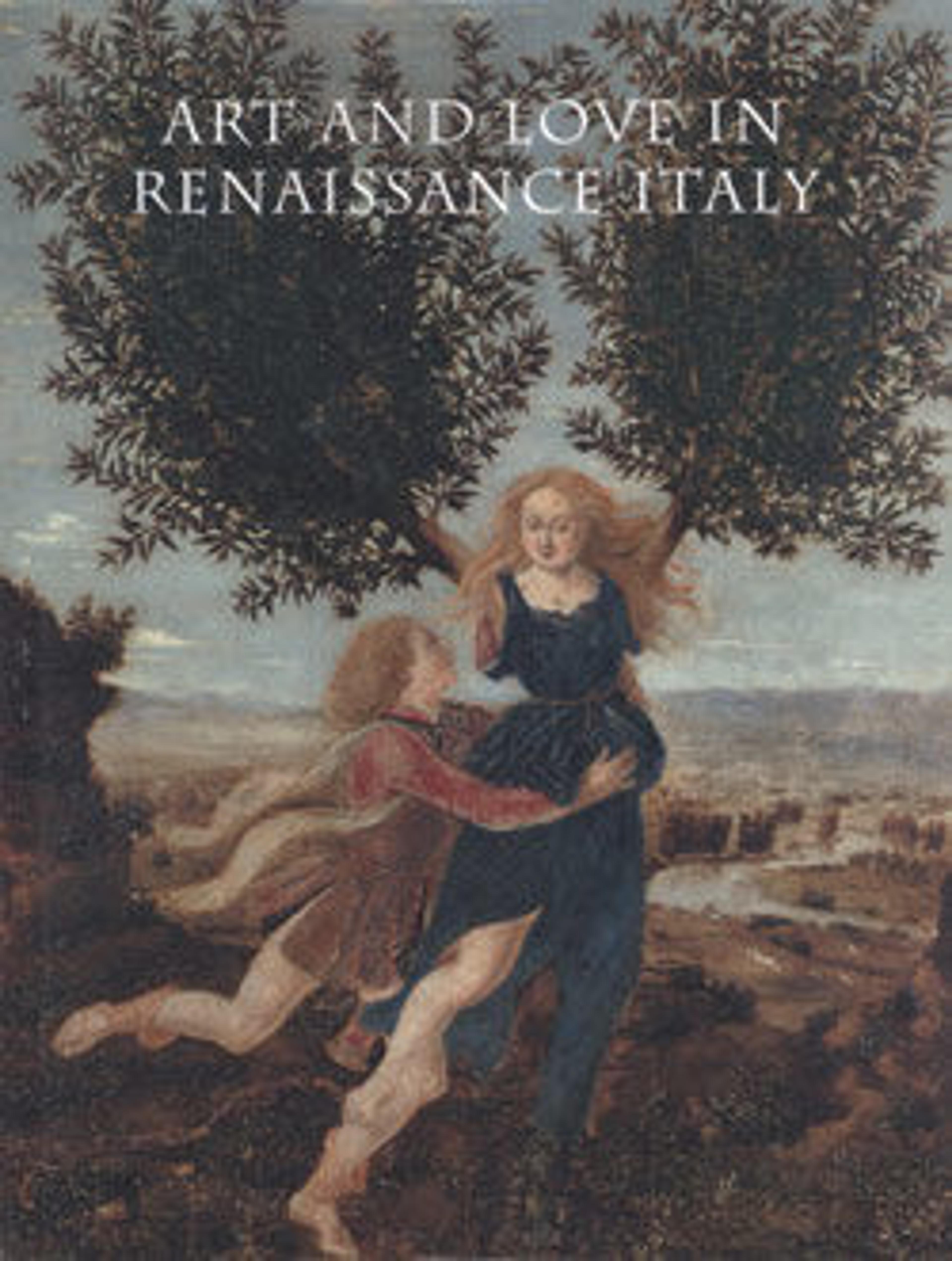Broth bowl and cover (scodella and tagliere) from an accouchement set; Aeneas leaving Troy with his father and son (inside bowl); Pyramis and Thisbe (on cover)
Baldassare Manara was one of the principal ceramics artists active in Faenza, working in a productive and well-documented shop. These two pieces of a maiolica set, produced on the occasion of childbirth, are highly unusual for their complex classical imagery and their elaborate inscriptions. New mothers in Renaissance Italy were often presented with maiolica birth sets. Although no complete set survives, these gifts consisted of five interlocking pieces: a footed broth bowl and its cover (which doubled as a plate), a drinking cup, a saltcellar, and a lid. When assembled, these objects formed a single unit and any imagery on the interior—in this case, a series of scenes from ancient mythology—was hidden from view. The subjects may have been chosen for their symbolic meanings: Aeneas carrying his father out of burning Troy for its theme of filial piety; Pyramis and Thisbe for the power of love; and Hercules and the Nemean Lion perhaps to foretell the strength and virtues of the child just born. The first of the inscriptions—"God with his hands created you so fair that now to mortal eyes you appear more precious than any oriental gem"—must have referred to the mother. The other inscriptions do not entirely correspond to the scenes with which they have been paired, perhaps due to an error on the part of the painter.
Artwork Details
- Title: Broth bowl and cover (scodella and tagliere) from an accouchement set; Aeneas leaving Troy with his father and son (inside bowl); Pyramis and Thisbe (on cover)
- Artist: Baldassare Manara (Italian, Faenza, active first half 16th century)
- Date: ca. 1530–40
- Medium: Maiolica (tin-glazed earthenware)
- Dimensions: H. 4 1/8 in. (10.5 cm); Diam. 7 3/4 in. (19.7 cm)
- Classification: Ceramics-Pottery
- Credit Line: Robert Lehman Collection, 1975
- Object Number: 1975.1.1043a,b
- Curatorial Department: The Robert Lehman Collection
More Artwork
Research Resources
The Met provides unparalleled resources for research and welcomes an international community of students and scholars. The Met's Open Access API is where creators and researchers can connect to the The Met collection. Open Access data and public domain images are available for unrestricted commercial and noncommercial use without permission or fee.
To request images under copyright and other restrictions, please use this Image Request form.
Feedback
We continue to research and examine historical and cultural context for objects in The Met collection. If you have comments or questions about this object record, please contact us using the form below. The Museum looks forward to receiving your comments.
